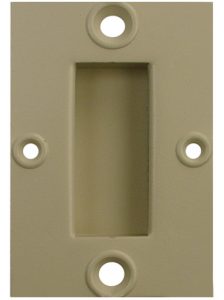
Recessed pull handles offer an attractive alternative to conventional pull handles. As their name suggests, they feature a recessed design that sinks into the surface of an object. Recessed pull handles are commonly used for doors, drawers and cabinets. When installed, the top of the recessed pull handle will sit flush the object. Below are five things to consider when choosing recessed pull handles.
#1) Size
You can find recessed pull handles in different sizes. Some of them are large, whereas others are small. Large recessed pull handles will cover more surface area of the object with which they are used. If a recessed pull handle is too small, though, you may struggle to grip it. Therefore, you should choose recessed pull handles in an appropriate size for your application.
#2) Material
Different recessed pull handles are made of different materials. Steel is a common material in which recessed pull handles are made. Stainless steel recessed pull handles are strong, durable and resistant to corrosion. Other recessed pull handles are made of aluminum. Aluminum recessed pull handles aren’t as strong as their stainless steel counterparts, but they weigh less while offering a thinner design.
#3) Finish
Don’t forget to consider the finish when choosing recessed pull handles. Most recessed pull handles feature some type of finish. A finish is a layer of new material that’s applied over the existing material. Both stainless steel and aluminum recessed pull handles, for instance, may feature a powder-coated finish. They are designed with a powder-based layer — the powder typically consists of plastic or polymer particles — that’s applied over the surface.
#4) Through Holes
You should consider the through holes when choosing recessed pull handles as well. Through holes are the precut holes that are used for securing recessed pull handles to objects via fasteners. To install a recessed pull handle, you can drive fasteners into these holes and into the object. While some recessed pull handles have threaded through holes, others have unthreaded through holes. Threaded through holes support the use of bolts as fasteners. Unthreaded through holes are generally designed for screws.
#5) Direction
Finally, you should consider the direction in which recessed pull handles operate. All recessed pull handles require a pulling force. You can open a door or cabinet, for instance, by inserting your hand into a recessed pull handle, followed by pulling it. Some recessed pull handles only work in a particular direction. You may have to pull them from either the right or left side. Alternatively, there are bi-directional recessed pull handles that can be opened from both sides.
